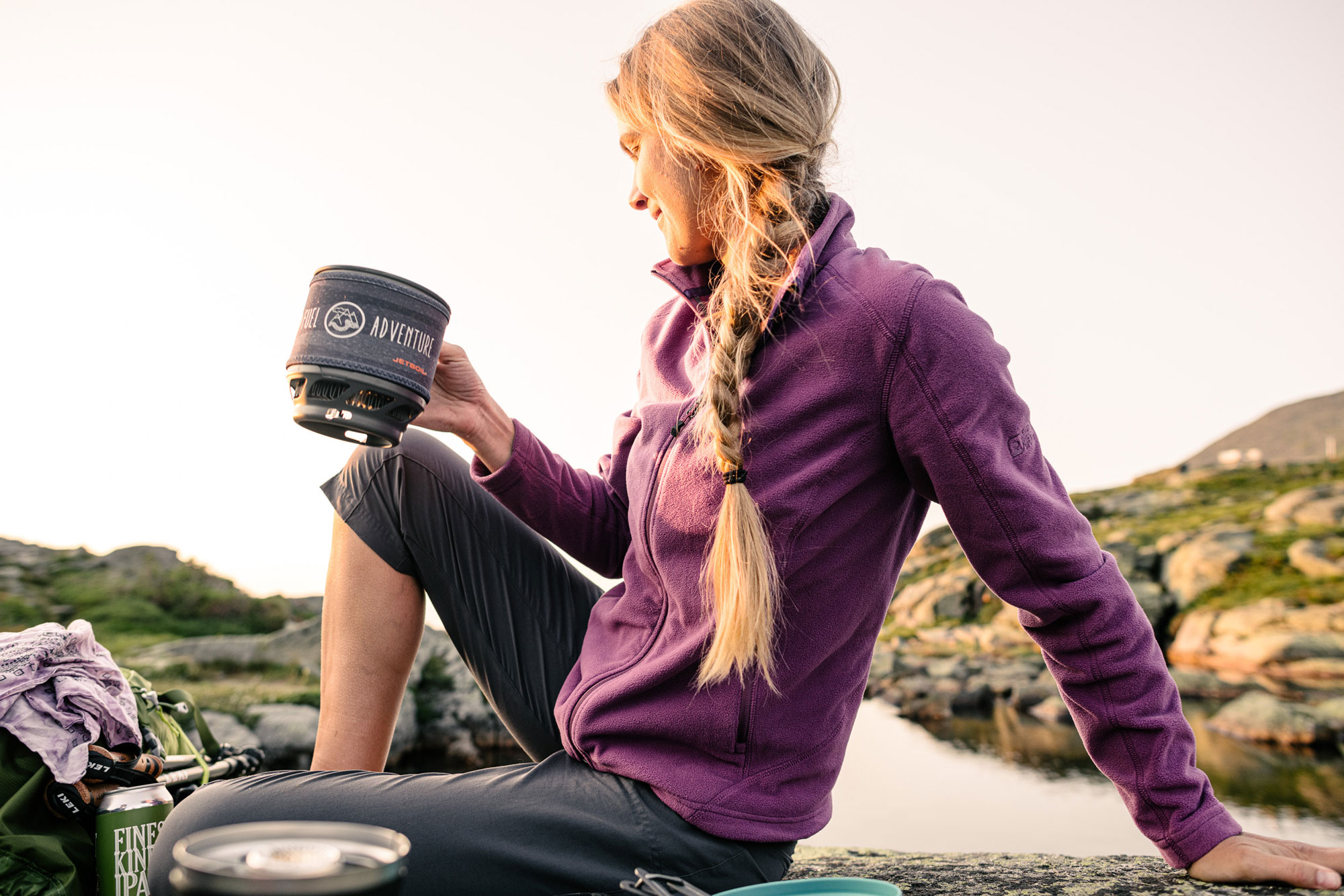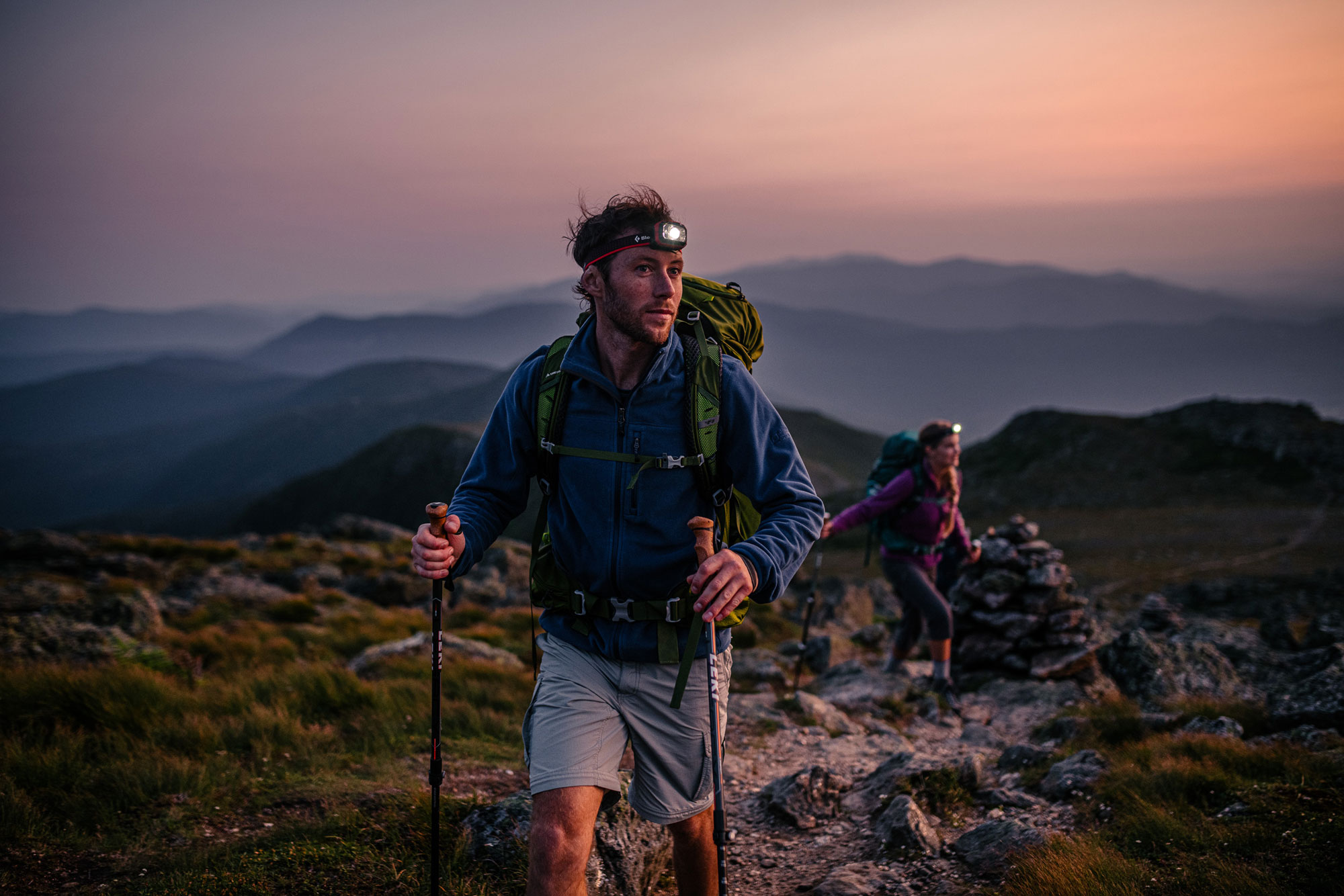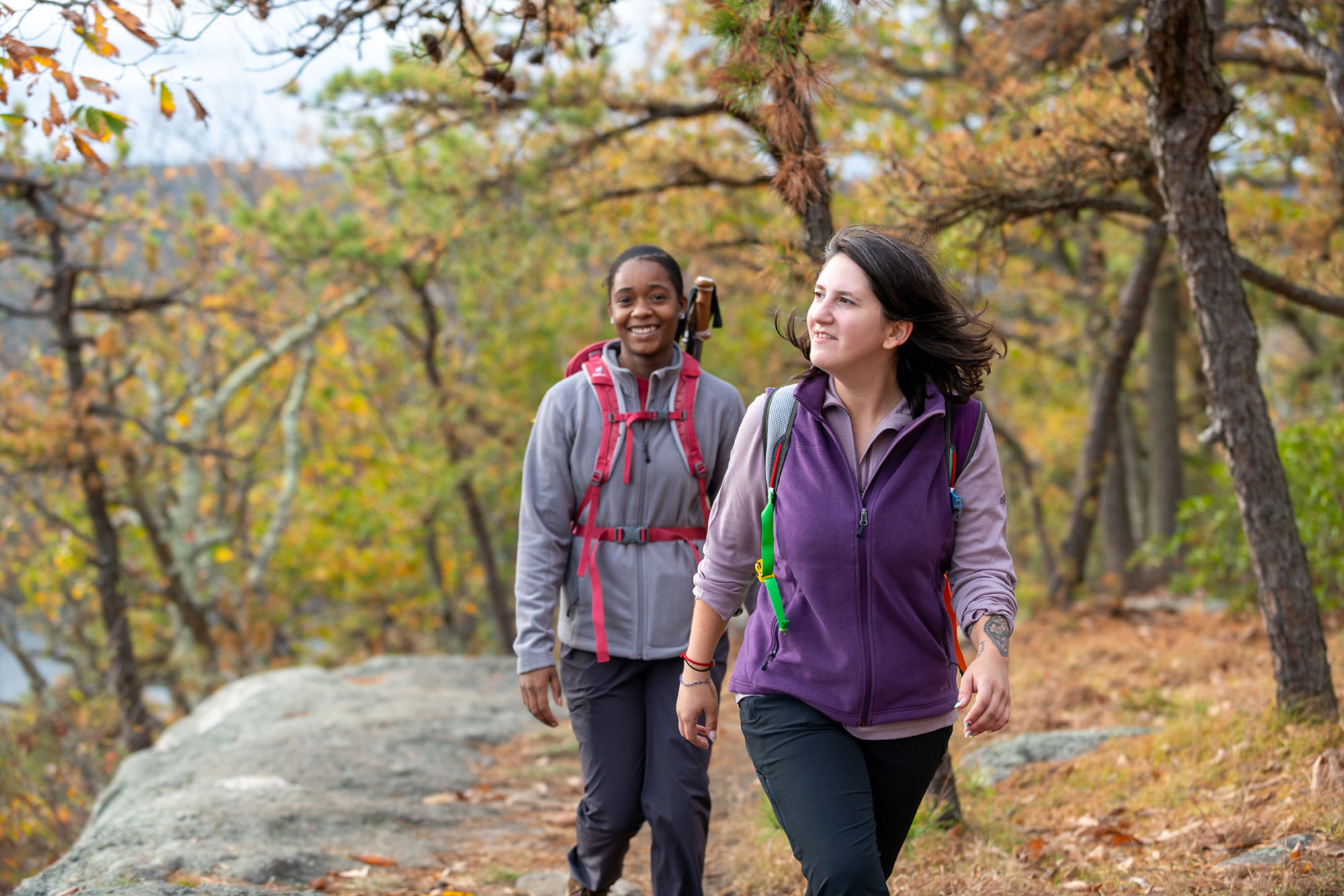Since its introduction in the mid-1980s, fleece has been a staple of everyone from world-class mountaineers to plain ol’ outdoor enthusiasts—and has been seen everywhere from Main Street to the summit of Mount Everest. As the use of fleece has expanded, so have the types of fleece available. Take a trip to your local EMS today and you’ll discover a variety of different weight fleeces as well as distinct styles, such as grid and stretch. With so many options available, it’s easy to feel overwhelmed, especially considering what type of fleece best meets your needs is key to dialing in your kit.
Luckily, deciphering the different types of fleece, along with their benefits and drawbacks, is fairly straightforward.

The Basics
Despite taking its name from the coat of a sheep, fleece is a man-made fabric constructed of a type of polyester called polyethylene terephthalate (PET).
Pros: Fleece has several characteristics that are desirable to outdoor enthusiasts: it’s breathable, wicking, and quick-drying. It also provides an exceptional warmth-to-weight ratio, isn’t itchy, and feels soft against your skin, especially when compared to traditional wool, which it was originally intended to replace (though modern wool has come a long way in the itch department). Fleece is also so hydrophobic that it holds less than 1% of its weight in water.
Cons: While fleece is a favored fabric for outdoor clothes, it’s not perfect. Its fuzzy exterior has a tendency to pill over time and is a magnet for lint and pet hair, as any dog owner can attest to. Also, the same hydrophobic property that makes it such an effective layer allows it to resist soaps and detergents—in other words, they can hold odors.
“Standard” Fleece
Fleece often ends up as a catchall term for a wide variety of different types of fleeces—most commonly for the fuzzy fabric used on outerwear like the iconic The North Face Denali jacket. In general, “standard” fleece is offered in three different weights: 100, 200, and 300, with 100-weight—also often called microfleece—being the lightest (and least warm) and 300-weight being the heaviest (and most warm).

Grid Fleece
The aptly named grid fleece is distinguished by the grid pattern it features on the body-facing side of the fabric while commonly featuring a smooth outer fabric.
Pros: Grid fleece provides more air space against the body than “standard” fleece, which allows it to trap more heat, breathe better, wick faster, and compress smaller. The grid pattern creates mechanical wicking, which is when moisture is drawn away from your body through the lower surface area of the grid to the larger surface area of the smooth face fabric. Because this pulls moisture away from your body, it makes the grid fleece feel warmer and enables the garment to dry quicker.
Pro tip: A bonus of grid fleeces—they can deliver two levels of warmth, which only adds to their versatility. If you turn a grid fleece inside out, it traps less air and is subsequently less warm.
Cons: Although the grid pattern provides a host of advantages, it does cost more than standard fleece. Another disadvantage of grid fleece is that it provides unequal insulation, with the lines of the grid providing more warmth and the space between them with less (though the grids are usually small enough for you not to notice this). Finally, like other garments designed to let air escape, grid fleece is also susceptible to letting air in, so it may not feel warm if you wear it as an outer layer on a windy winter traverse of Franconia Ridge.

Stretch Fleece
Also well named, stretch fleece is notable for the material’s four-way stretch which makes it a favorite of outdoor enthusiasts on the move. What makes stretch fleece unique is that the interior of the fabric is made with polyester fleece, while the face fabric uses nylon. Nylon is hydrophilic, meaning it absorbs water. In the context of stretch fleece, the outer nylon face fabric attracts moisture from the interior (hydrophilic) polyester fabric so it can evaporate.
Pros: The biggest benefit of stretch fleece is that it offers a freedom of movement that is unmatched by other types of fleece, making it particularly popular with climbers. Another advantage of stretch fleece is that its nylon face (and common snug fit) allows it to slide easily under other layers, delivers unrestricted comfort, and doesn’t bunch up like other fleeces when worn as a mid-layer. The nylon face fabric is also more resistant to abrasion and pilling.
Cons: There are a lot of great reasons to choose a stretch fleece, but it also has its limitations. For example, because the nylon face fabric attracts water, stretch fleeces take longer to dry than other types of fleece.

So How Do You Choose?
Options abound for those looking to add a fleece to their kits and it’s common for outdoor enthusiasts to have a quiver of fleece layers at their disposal. That said, here are some suggestions for optimal outdoor fleece use.
Standard fleece: Affordable and readily available, standard fleeces deliver excellent insulation for a wide range of activities—from hiking to skiing to climbing—and are the perfect choice for those looking for one fleece to do it all.
Grid fleece: The breathability of grid fleece and lighter packed weight make it ideal for outdoors people on the move and is optimally paired with activities like cross-country skiing, snowshoeing, backcountry skiing, and fast-and-light backpacking.
Stretch fleece: Unhindered movement and an abrasion-resistant face make stretch fleece a favorite of climbers whether under their shells ice climbing or groveling up granite faces in the fall.
Of course, these are just suggestions. Like other layering systems, finding out what fleece is best for you comes down to experimentation and trying a few different ones in a variety of conditions, activities, and intensity levels.
Tim Peck and Doug Martland
Tim and Doug met long ago at the Eastern Mountain Sports in Canton, Massachusetts. Bonding over a love of slick Quincy Quarry granite, White Mountain sufferfests, and scheming up adventures while folding tee-shirts, today Tim and Doug collaborate to write about their favorite outdoor activities and occasionally get nostalgic about tee-shirt tables.




